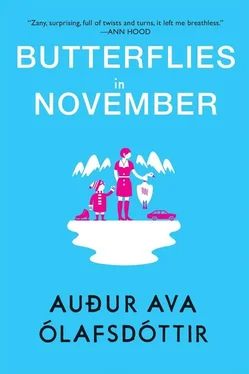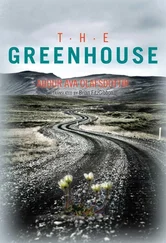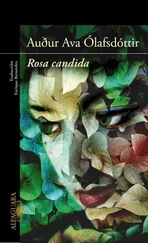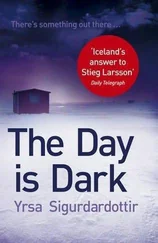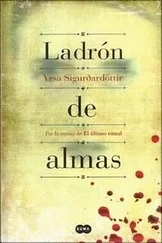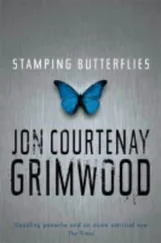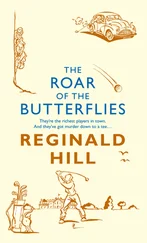Once he has fallen asleep again, I audaciously set the time on the second dial — the free one that can be set according to my own conscience. It has got to be said to my conscience’s credit, though, that on this October night it is proving to be more steadfast than my heart, which is why I set the same time on both dials and they both read seventeen minutes past three, as I lay down in the hollow of my husband’s elbow, nestling into him as if nothing had happened, with one arm over his chest, which heaves and sinks, causing the alarm clock on the bedside table to flash in and out of view. Then, as usual, I tire of the twisted position of my shoulder and slip my arm away as I turn from him and he follows my movement with a heavy arm.
All things considered, you can’t really say that he ever treated me badly.
I wake up beside the close body of a stranger and move cautiously in the bed, groping through the ominous crack of dawn. I had almost forgotten under the quilt that we are no longer lovers. His eyes are open and for the next three-quarters of an hour he too looks as if he has forgotten. By the time I wriggle myself out of bed, he has drifted back to sleep again. I stretch my hand out to my new watch and see that the dial indicates my conscience’s time stopped at 7:05. Which is the exact time of my birth, some thirty-three years and three weeks ago to the day. I stare at my watch, as if it were the heart of the goose that had ceased to beat.
There is a time for everything, a time for sleeping, a time for loving, a time for breaking up, for running — everything has its time. Abandoning the warmth of the conjugal bed, I tiptoe to open the door out into the cold darkness of dawn, holding my sneakers until I reach the steps. My neighbour from the basement is standing in the driveway, holding a child in one arm and a boiled kettle in the other. I see her pouring water over the lock of the car and windscreen to melt a porthole that is just about big enough for her to be able to peer through on her way to the kindergarten. The hot steam from the kettle oozes into the darkness in breathy puffs that colour the air in a milky grey hue that then fuses with it.
“I don’t know what I was thinking when I locked the car in the driveway,” she says, waving at me. The kettle is now resting on the hood of the car.
“They’re forecasting rising temperatures and rain,” I say, trying to restore my neighbour’s faith in a better future.
As soon as I step onto the pavement, the dog from the floor above gives me a warm welcome. Brandishing the handle of a leash in his mouth, he thrusts it at me and is so beside himself with excitement and joy that he barely seems to know which leg to stand on. I pat him, but don’t touch the leash — this time I’ll run alone. He whines after me and runs in confused circles by the garden gate.
I start to jog along the traffic island that separates the opposing lanes of traffic. Mute and weary faces populate the cars. The blinking of their red indicators is reflected in the thin film of frost that covers the traffic bollards at the crossroads.
I jog past eleven stationary cars in a row at the traffic lights and no one is kissing in the frozen air, not even those who kept their cars parked in their heated garages overnight. Nevertheless people are, generally speaking, well disposed to the world when they wake up and start off on their journeys, their eyes still glistening with dreams. So few of them would have the energy to start quarrelling or two-timing their partners before eight in the morning, I would imagine, or at least not until they’ve had a child together. Most people are travelling by car, but those who are on foot drag their feet along the ice, all round-shouldered, without lifting their heels or the tips of their shoes, as if they were wearing tiny cross-country skis, sliding forward by three to six centimetres with each thrust.
The front gate is closed, but I don’t bother looking for any other entrances. Even though the wall carries a CCTV surveillance sign, it’s a piece of cake to climb over it, as I always do, and sneak into the garden of the dead. I land close to the grave of the City Council Treasurer and his widow. This is something my ex would never do; he isn’t the kind of guy who climbs over walls. I have the whole graveyard to myself; I’m at peace and safe in here, in good company, many of these people must have been feeling lonely. Taking a closer look at the tombstone of the couple, I calculate that she had been a widow for sixty years. I would guess that must have left them with four years of married life and three children.
Everything is veiled by a thin coat of snow, but I still feel a good grip under the soles of my shoes and start running on the gravel path, under the beam of the spotlights, like a convict taking his daily jog around a guarded yard, surrounded by insurmountable walls topped with barbed wire, and I picture guards brandishing machine guns on the multi-coloured corrugated iron rooftops. The city centre is still sunk in darkness, but a faint violet glow is beginning to spread across the sky.
Whenever I give directions to foreigners who happen to be standing by the cemetery, unfolding maps and scanning the horizon for some sign of a city centre, and spotting neither souvenir shops nor cafés, nor the faintest hint of an urban axis as they are being blasted by the rust-brown northern wind, I say: “Yes, if you want to go to the centre of the town, you’ve got to go through the cemetery first. Then you go to the lake. Everybody has to go through a cemetery in life. Yes, you turn to the right and then to the right again and then you turn to the left — but only after you’ve passed the cemetery. Yes, that’s right. This is Reykjavík. You need a cemetery to go through life.”
Then the foreigners carry on their way and, as I watch them, I see that they all bypass the graveyard, without exception, as if they had no interest in death but were content enough to simply peer through those little slits for their eyes and nostrils in the hoods of their parkas, looking in all directions, over the heads of the rest of us who live below, as if they thought there was something worth seeing up there.
I can cover a few hundred metres in a straight line down the path if I run over one or two overgrown graves that have long fallen into a state of disrepair. I then turn around on the edge of a tiny freshly dug grave between the resting places of two elderly brothers. A premature baby was buried there during the week beside his great grand-uncles. I zigzag back between the trees, and then pace a stretch over my footprints, running back and forth sixteen times, without pausing, faster and faster each time, until I can barely catch my breath any more, the path has been completely trampled and I feel my heartbeat pounding in my head and ears. Then I truly feel like a living being in the middle of this garden of the dead, I’m most definitely alive in here.
I sense I’m no longer alone; there is a crunching sound in the snow behind me and a twig snaps with still no sign of daylight. I feel heavy excited breathing close by, first right behind me and then beside me, we run side by side, he and I. A moment later his hot and muscular body is rubbing against me, his wet tongue in the palm of my hand. In his eagerness and passion he fawns all over me, pressing me against a granite pillar under which a mother and son repose.
It’s my friend from the top floor, Max the mastiff, a mongrel between innocent Icelandic gullibility and foreign rigour, neither a sheepdog nor a watchdog.
He has taken the dog with him and set him loose on me, while he himself snugly rests his back against the statue of our national poet. The tip of his cigarette is glowing.
“Stop a second, I need to talk to you.”
Читать дальше
